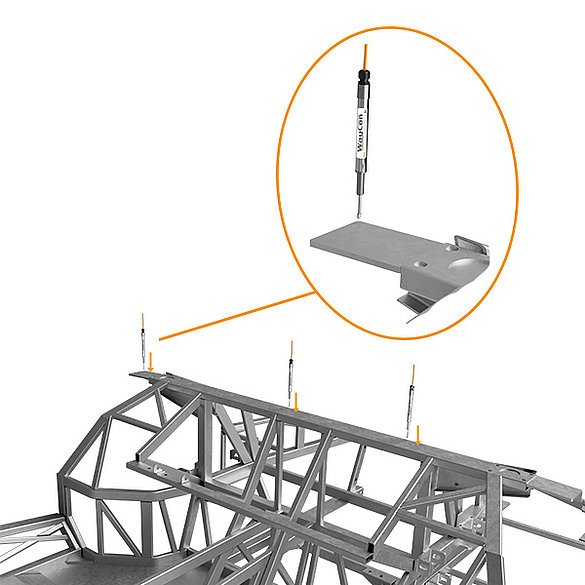LVDT vs digital measuring sensor: What’s the difference?
05.12.2022
Just like a digital measuring sensor, the linear variable differential transformer (LVDT) is a mechanical measurement sensor. They both record geometric sizes in measurement technology, usually for linear position measurement.
The digital measuring sensor is considerably more accurate than LVDTs. The electronics built into digital measurement sensors make it possible to initiate a precise measurement immediately. An LVDT typically needs to be set up with external electronics or configured to it before the position sensor can be used. Although not common, there are now LVDTs with built-in electronics as well.
Both position measurement systems have a return spring which pushes the measuring tip out of the sensor to the maximum point (measuring distance). The precision bearings in digital measuring sensors enable reliable positioning of the measuring tip, while slight lateral loads are mechanically recorded by the position sensor at the same time.
As a measuring sensor, the LVDT is based on the inductive measurement principle, which is more readily affected by external magnetic fields that can interfere with measurements. In contrast, digital measuring sensors are not susceptible to interference, as they are based on photoelectric scanning. Tiny graduation lines only micrometres wide are read from the built-in ruler. That is why digital measuring sensors are occasionally also referred to as photosensors. Digital measuring sensors typically deliver an incremental signal such as HTL or TTL, whereas inductive measuring sensors provide an analogue current (4…20 mA) or voltage signal (0…10 V).
Since LVDTs are usually equipped with external electronics, this is not necessarily a downside. In extreme conditions such as very high temperatures or extremely low temperatures, only LVDTs can be used, as the electronics in measuring sensors generally only works in temperatures ranging from 0 to 60 °C. Digital measuring sensors are not suitable for very high temperatures due to their built-in electronics.
One typical application of LVDTs in the automotive industry is quality control of chassis, where they monitor deformation caused by treatment at extremely high temperatures of up to 200 °C. Inductive measuring sensors deliver exact measurements at these temperatures – where most other sensors can no longer be used.
A prime example of this sensor type, the LV series offers outstanding linearity of up to ±0.1 % of the measuring range. Thanks to the small size of the LVDT, its measuring range of up to 25 mm can be fully utilised even in confined spaces. In addition, the nickel-plated steel housing and high IP67 protection class make inductive measuring sensors extremely durable as well. Besides the traditional version with a spring sensor and ball tip, the sensors are also available with a probe, sensing plate, sensing wheel or magnetic sensing plate as options. If these sensor versions are not suitable for the specific application, the LV series additionally offers the LV-G version, a spring-free version with articulated lugs.
Technical specifications for the LVDT can be found in the LV data sheet.
For more information on LVDTs, visit the LVDT product page.
For more information on digital length gauges, see the digital length gauges product page.






